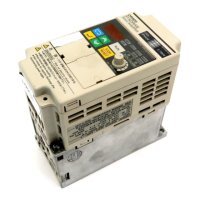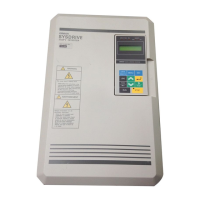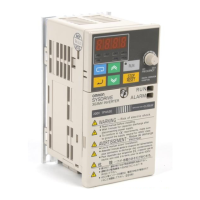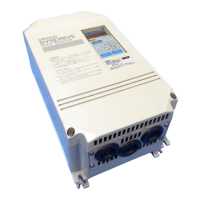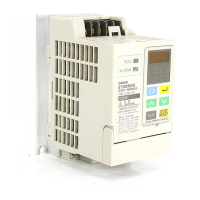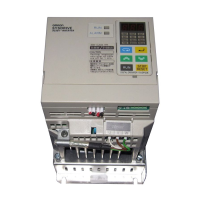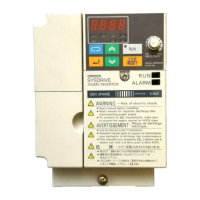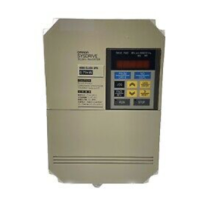3-90
3. Calculate the percentage of the output current based on the rated output current as 100%.
4. Set n082 to half the number calculated.
n109 Slip Compensation Gain
Setting range 0.0 to 9.9 Unit % (Motor rated
frequency)
Default setting 0.0
n110 Motor No-load Current
Setting range 0 to 99 Unit % (Motor rated
current n032)
Default setting 30
n111 Slip Compensation Primary Delay Time
Setting range 0.0 to 25.5 Unit s Default setting 2.0
• The slip compensation function keeps the rotating speed of the motor constant if the load is heavy.
Without
this function, the motor will slip and the rotating speed of the motor will decrease if the load is
heavy.
• If
the output
current of the Inverter is equal to the electronic thermal reference current (i.e., the rated
current
of the motor), add the compensation
frequency equivalent to the rated slippage value of the
motor to the output frequency.
• Refer to the following formulas to obtain the constants to be set in n109 and n110.
n109 = (Synchronization speed – rated motor revolution)/synchronization speed × 100
Synchronization speed = 120f/P
P: No. of polls
f: Rated frequency
n110 = (Output current with no load/rated current of the motor) × 100
• The compensation frequency (fc) can be obtained from the following.
If
the output frequency is lower than the constant set in n26 for the maximum voltage frequency
, use
the following formula to obtain the compensation frequency (fc).
fc = n014 × n109 × [output current – (n032 × n110/100)]/[n032 – (n032 × n110/100)]
If
the output frequency is equal to or higher than the constant set in n26 for the maximum voltage
frequency, use the following formula to obtain the compensation frequency (fc).
fc = output frequency × n109 × [output current – (n032 × n110/100)]/[n31 – (n032 × n110/100)]
n014: Maximum voltage frequency (Hz)
n032: Motor rated current (A)
• Slip compensation primary delay time is set in s units.
Usually setting is not necessary. Adjust when slip compensation responsiveness is low, or speed
has not stabilized.
S When responsiveness is low, decrease the set value.
S When speed has not stabilized, increase the set value.
Note 1. The slip compensation function does not work if the output frequency is lower than the
constant set in n017 for the minimum output frequency.
Note 2. The slip compensation function does not work if the Inverter is in regenerative operation.
Note 3. The slip compensation function does not work if 0.0 is set for the Motor Rated Current.
Preparing for Operation Chapter 3

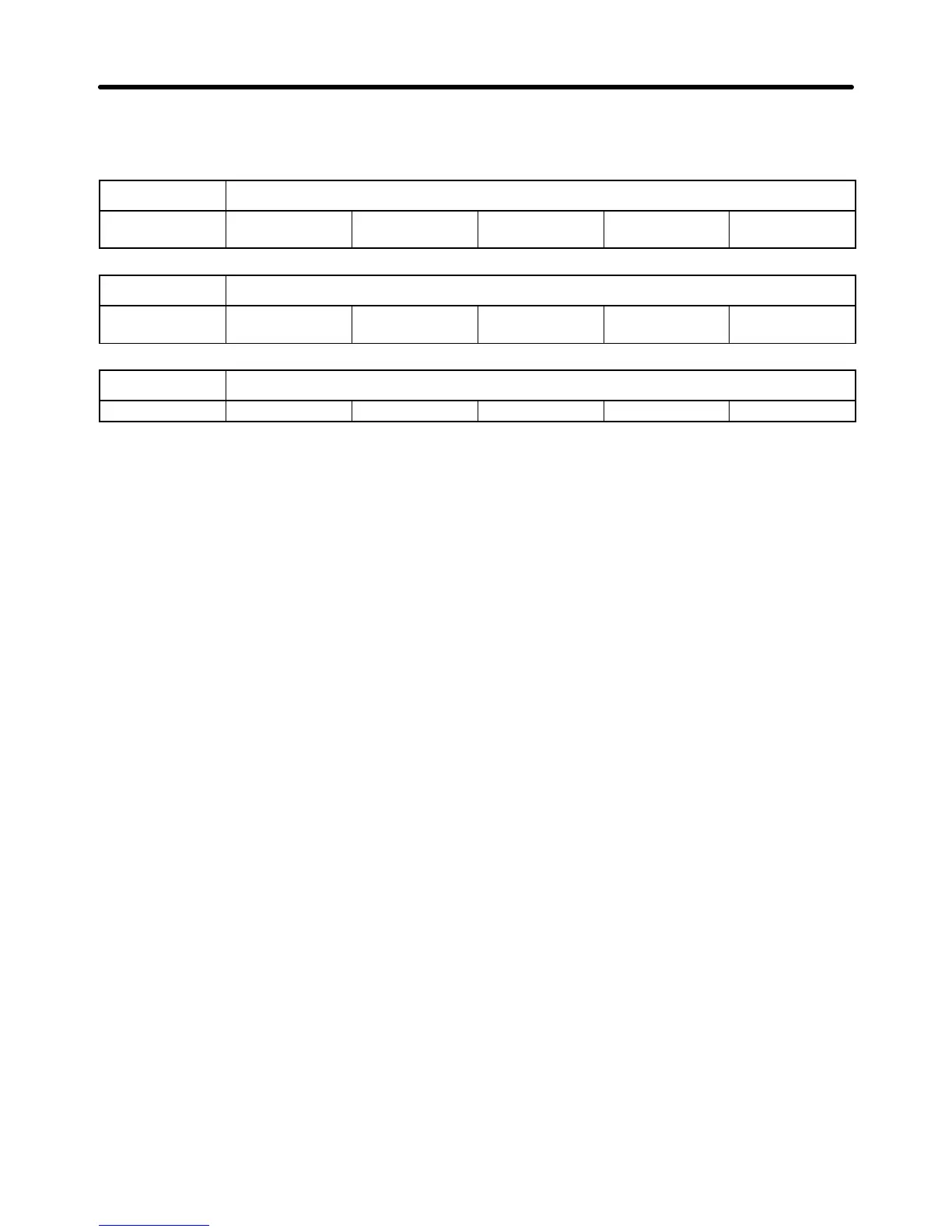